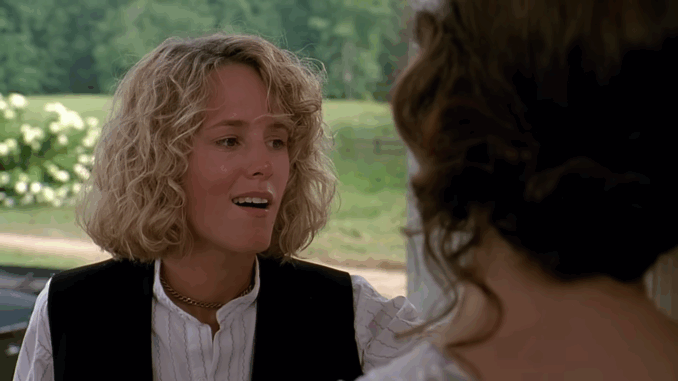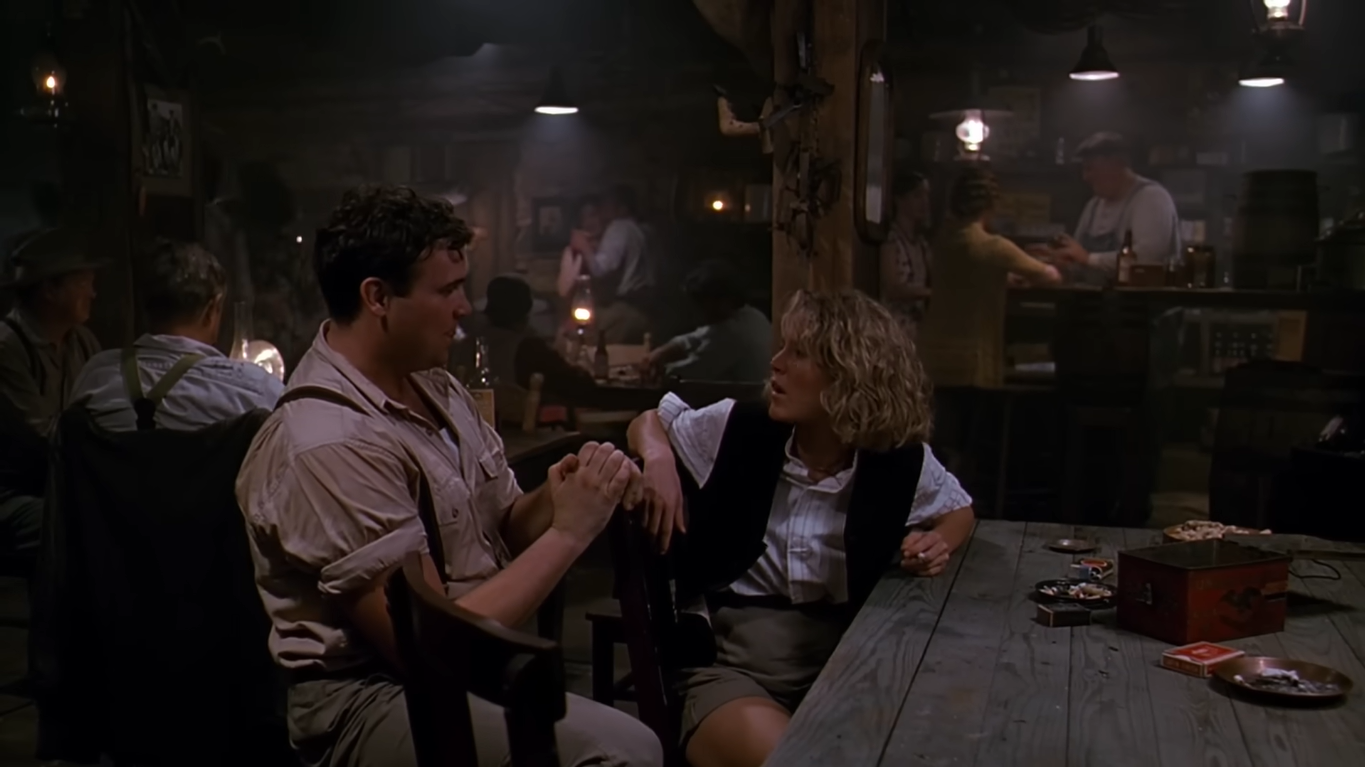
In a world where many women are told to endure, to stay silent, and to smile through suffering, Fried Green Tomatoes dares to show something revolutionary: a woman choosing herself. Ruth Jamison’s escape from her abusive husband Frank Bennett isn’t just a dramatic twist in the story — it’s a profound act of courage, resistance, and rebirth.
The Trap Behind the Vows
When we first meet Ruth, she seems like the image of a “proper Southern lady.” Beautiful, polite, devout — the kind of woman people praise in church pews and gossip about behind closed doors. But behind her composed exterior lies a dark reality: she is trapped in an abusive marriage to Frank Bennett, a violent, controlling man.
-
Frank isolates Ruth from her family.
-
He dominates her through fear.
-
His physical violence is never shown directly in the film, but its effects are written all over Ruth’s body language, her quiet sadness, and the way she speaks in whispers instead of words.
The Letter That Changed Everything
Ruth’s turning point comes in the form of a letter — a quiet lifeline tossed from the outside world. Idgie, her childhood friend turned soulmate, reaches out across distance and pain, not with demands, but with a gentle invitation:
“If you ever need a friend, I’m here.”
The power of this letter is immeasurable. In a society that condemns divorce, that blames women for their own suffering, that hides domestic violence behind closed curtains — Ruth is given something rare: permission to choose freedom.
The Escape: A Scene of Quiet Defiance

Unlike Hollywood-style dramatic chases, Ruth’s escape is deliberate, quiet, and intimate. She doesn’t run in the dead of night with a suitcase. Instead, she carefully plans, waits for the right moment — and most importantly, chooses to leave while carrying a child inside her womb.
This choice isn’t just about saving herself — it’s about saving the next generation from the same cycle of pain.
-
Ruth leaves behind safety, wealth, and social acceptance.
-
She walks into uncertainty, scandal, and financial risk.
-
But in doing so, she walks toward a life that is hers to live.
It’s important to remember that in the 1920s South, what Ruth did was more than bold — it was dangerous. Women who left their husbands faced poverty, ostracization, even legal retaliation. Ruth’s escape is a rebellion against a patriarchal system that sees women as property.
Rebuilding at the Whistle Stop Café
Ruth’s rebirth doesn’t happen in a courtroom or on a soapbox — it happens in the kitchen of a small café, standing side by side with Idgie and Sipsey. Here, Ruth transforms from victim to survivor to provider.
-
She becomes a business owner.
-
She raises her son, Buddy Jr., in a world full of love.
-
She creates a home not built on fear, but on friendship and freedom.
The café becomes more than a place to eat — it’s a sanctuary, a declaration that a different kind of life is possible, even for those once broken.
Idgie and Ruth: Love Beyond Labels
While the film never explicitly defines the romantic nature of Idgie and Ruth’s relationship, their bond is clearly one of deep emotional, spiritual, and likely romantic love. Ruth doesn’t just run to safety — she runs to the person who has always seen her, believed in her, and stood by her.
Their relationship becomes a model of partnership over possession, tenderness over control.
Legacy of Escape
Ruth’s decision to leave Frank Bennett echoes through the generations. In the modern-day storyline, Evelyn Couch — a woman also stifled by expectations and loneliness — draws inspiration from Ruth’s story. This shows how one woman’s bravery can light the way for others, even decades later.
In a world where many women are still told to endure what hurts them, Ruth’s story matters. It reminds us that escape isn’t weakness — it’s a reclamation of life.
A Quiet Revolution
Fried Green Tomatoes isn’t just about food and friendship — it’s about freedom. Ruth’s escape is one of the film’s most powerful acts of resistance, showing that liberation doesn’t always look loud. Sometimes, it looks like a woman packing a suitcase, stepping into the sun, and walking toward something better.
Her journey is proof that healing begins the moment you choose to leave — and that every woman deserves the right to start over, no matter how long she’s been told she can’t.
